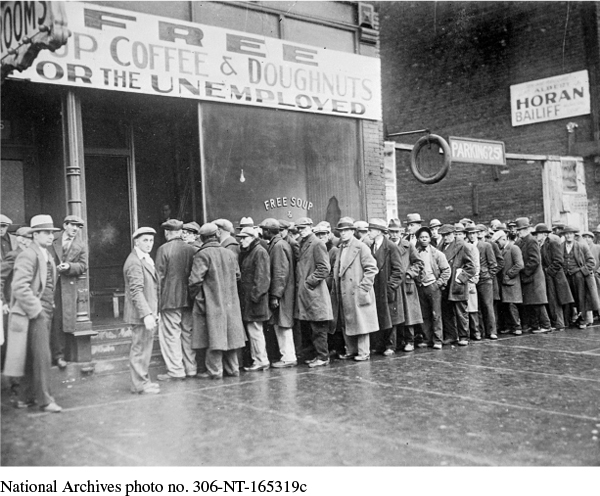Hoovervilles and Dust Storms
The depression hit all areas of the United States hard. In large cities, families crowded into apartments with no gas or electricity and little food to put on the table. In Los Angeles, people cooked their meals over wood fires in backyards. In many cities, the homeless constructed makeshift housing consisting of cartons, old newspapers, and cloth—what journalists derisively dubbed Hoovervilles. Thousands of hungry citizens wound up living under bridges in Portland, Oregon; in wrecked autos in city dumps in Brooklyn, New York, and Stockton, California; and in abandoned coal furnaces in Pittsburgh.

Rural workers fared no better. Landlords in West Virginia and Kentucky evicted coal miners and their families from their homes in the dead of winter, forcing them to live in tents. Farmers in the Great Plains, who were already experiencing foreclosures, were little prepared for the even greater natural disaster that laid waste to their farms. In the early 1930s, dust storms swept through western Kansas, eastern Colorado, western Oklahoma, the Texas Panhandle, and eastern New Mexico, in an area that came to be known as the Dust Bowl, destroying crops and plant and animal life. The storms resulted from both climatological and human causes. A series of droughts had destroyed crops and turned the earth into sand, which gusts of wind deposited on everything that lay in their path. Though they did not realize it at the time, plains farmers, by focusing on growing wheat for income, had neglected planting trees and grasses that would have kept the earth from eroding and turning into dust. See Document Project 22: The Depression in Rural America.
As the storms continued through the 1930s, most residents—approximately 75 percent—remained on the plains. Millions, however, headed for California looking for relief from the plague of swirling dirt and hoping to find jobs in the state’s fruit and vegetable fields. Although they came from several states besides Oklahoma, these migrants came to be known as “Okies,” a derogatory term used by those who resented and looked down on the poverty-stricken newcomers to their communities. John Steinbeck’s novel The Grapes of Wrath (1939) portrayed the plight of the fictional Joad family as storms and a bank foreclosure destroyed their Oklahoma farm and sent them on the road to California.
Exploring American HistoriesPrinted Page 722
Exploring American Histories Value EditionPrinted Page 533
Chapter Timeline